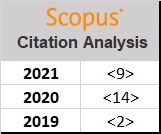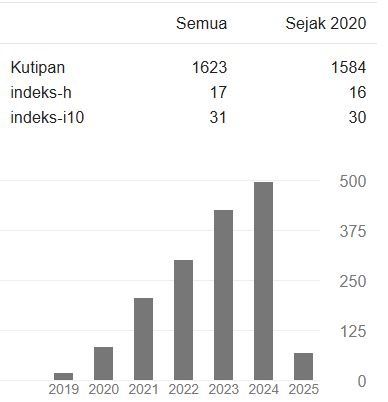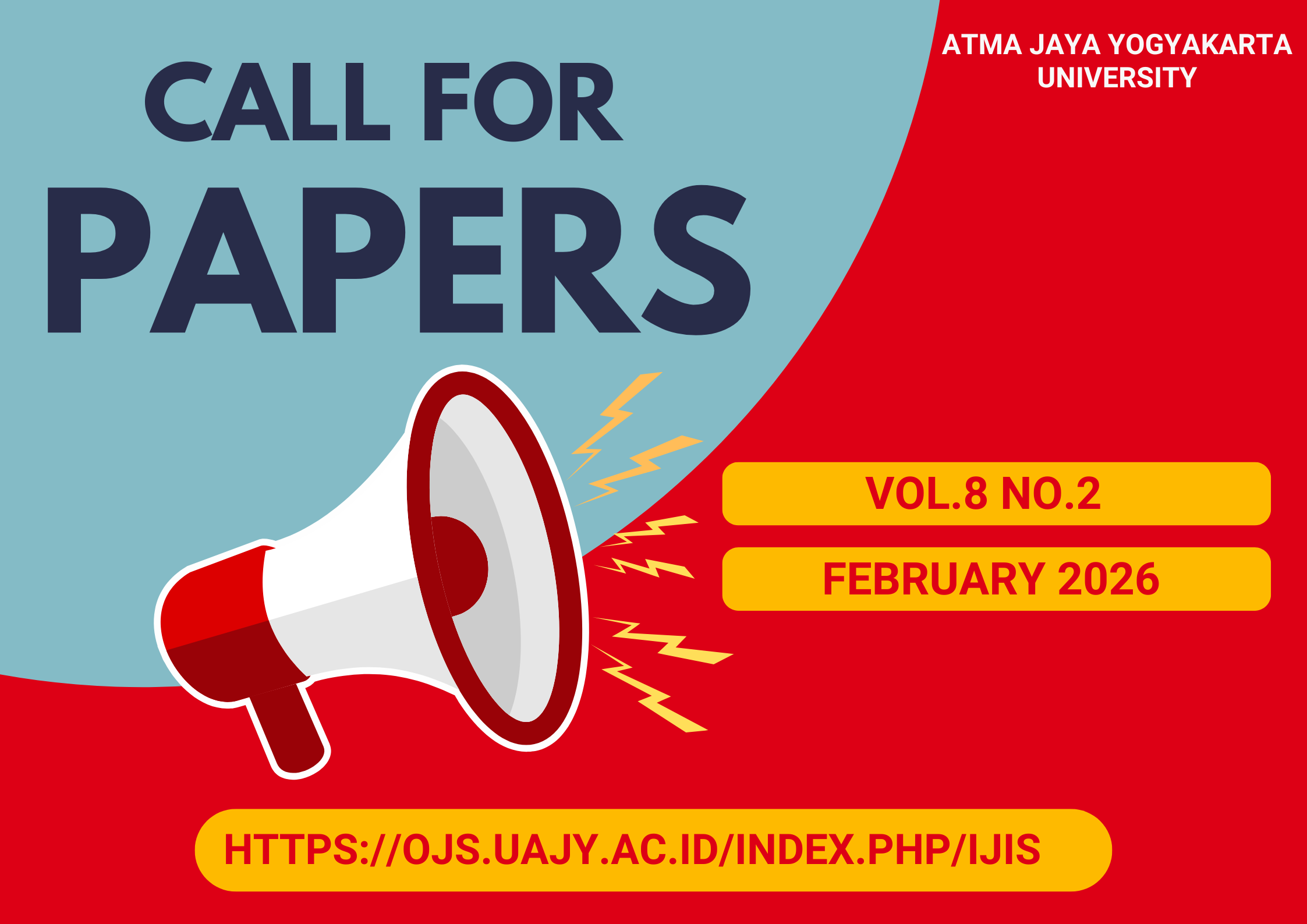The Adoption of Blended Learning in Non-Formal Education Using Extended Technology Acceptance Model
DOI:
https://doi.org/10.24002/ijis.v4i1.4415Keywords:
Blended Learning, SEM, TAM, Non-Formal EducationAbstract
This study aims to determine the influencing factors for understanding the intention of the learners in Non-Formal Education to use Blended Learning. In addition, it aims to investigate the relationships of the factors in a theoretical model. This study was conducted due to the lack of research in the world that discusses the adoption of Blended Learning in Non-Formal Education in Developing Countries such as Indonesia. Blended Learning at Non-Formal Education in the Covid-19 era is needed because the education institution has a limited place to accommodate more learners. A questionnaire based on google form was used to collect data. A sample of 566 users of Blended Learning from Non-Formal Education Institutions in Indonesia were used. All variables from the theoretical model are measured using existing scales. Structural Equation Model (SEM) was used to analyze the theoretical model. SPSS and Amos were used as the software tools. This research contributes to the theoretical understanding of Blended Learning adoption as well as practice and provide guidance for Non-Formal Education to successfully implementing Blended Learning in their institutions. From the thirteen initial hypotheses, there are nine significant hypotheses. Three hypotheses with the largest magnitude are SI -> PU, CE -> PEU, and PU -> BI. SI is the most influencing factor in the adoption of blended learning at non-formal education institutions.References
Wu, J.-H., Tennyson, R. D., & Hsia, T.-L. (2010). A study of student satisfaction in a blended e-learning system environment. Computers & Education, 55(1), 155–164.
Antonio Padilla-Melendez, Ana Rosa del Aguila-Obra, Aurora Garrido-Moreno. (2012). Perceived playfulness, gender differences and technology acceptance model in a blended learning scenario. Computer & Education.
Fitra A. Bachtiar, Aditya Rachmadi, anda Fajar Pradana. (2014). Acceptance in the Deployment of Blended Learning as a learning Resource in Information Technology and Computer Science Program, Brawijaya University. -Pacific Conference on Computer Aided System Engineering.
Mohamed Yeou. (2016). An Investigation of Students’ Acceptance of Moodle in a Blended Learning Setting Using Technology Acceptance Model. Journal of Educational Technology. Vol. 44(3) 300–318.
Tsui-Fen Chang, Cheng-Min Chao and Bor-Wen Cheng. (2015). Framework and Verification of a Blended E-Learning System Behavioral Intention Model Among Clinical Nurses. Journal of Baltic Science Education.
Khanh Ngo Nhu Tran. (2016). The Adoption of Blended E-learning Technology in Vietnam using a Revision of the Technology Acceptance Model. Journal of Information Technology Education: Research.
Jako Olivier. (2016). Blended learning in a first-year language class: Evaluating the acceptance of an interactive learning environment. Literator - Journal of Literary Criticism, Comparative Linguistics and Literary Studies. ISSN: (Online) 2219-8237.
Yueh-Ying Tsai, Cheng-Min Chao, Hong-Mau Lin, and Bor-Wen Cheng. Nursing staff intentions to continuously use a blended e-learning system from an integrative perspective. Springer Science and Business Media. Qual Quant 52, 2495–2513 (2018).
A. l-Azawei, P. Parslow, and K. Lundqvist. (2017) “Investigating the effect of learning styles in a blended e-learning system: An extension of the technology acceptance model (TAM),” Australasian Journal of Educational Technology, Nov.
V. Moreno, F. Cavazotte, and I. Alves, “Explaining university students’ effective use of e-learning platforms: Effective use of e-learning platforms” British Journal of Educational Technology, vol. 48, no. 4, pp. 995–1009, Jun. 2017.
Park, S. Y., Nam, M. W., & Cha, S. B. (2012). University students' behavioral intention to use mobile learning: Evaluating the technology acceptance model. British journal of educational technology, 43(4), 592-605.
Fred D. Davis, Richard P. Bagozzi and Paul R. Warshaw. (1989) User Acceptance of Computer Technology: A Comparison of Two Theoretical Models. Management Science Vol. 35 No. 8 August 1989.
Kamla Ali Al-Busaidi. (2012). “Learners’ Perspective on Critical Factors to LMS Success in Blended Learning: An Empirical Investigation”. Communications of the Association for Information Systems. Vol. 30, Article 2.
A. Bandura, “Self-Efficacy: Toward a Unifying Theory of Behavioral Change*,” Pergamon Press Ltd, 1978.
Ajzen, “Theory of Planned Behavior,” Organ. Behav. Hum. Decis. Process., vol. 50, pp. 179–211, 1991.
Abbad, M. M., Morris, D., & De Nahlik, C. (2009). Looking under the Bonnet: Factors Affecting Student Adoption of E-Learning Systems in Jordan. The International Review of Research in Open and Distributed Learning, 10(2).
Robert B. Cialdini and Noah J. Goldstein. (2004). SOCIAL INFLUENCE: Compliance and Conformity. Department of Psychology, Arizona State University. Annu. Rev. Psychol. 2004. 55:591–621.
W. L. Neuman, Social research methods, qualitative and quantitative approaches. Boston: Allyn and Bacon, 2006.
D. Straub, M.-C. Boudreau, and D. Gefen, “Validation Guidelines for IS Positivist Research,” Commun. Assoc. Inf. Syst., vol. 13, no. March, pp. 380–427, 2004
D. George and P. Mallery, SPSS for windows step by step: A simple guide and reference. 11.0 update. Boston: Allyn and Bacon, 2003.
R. B. Kline, Principles and practice of structural equation modeling, 4th ed. London: Guilford Press, 2016.
R. E. Schumacker and R. G. Lomax, A beginner’s guide to structural equation modeling, 4th ed. New York: Routledge, 2016
Vo, H. M., Zhu, C., & Diep, N. A. (2017). The effect of blended learning on student performance at course-level in higher education: A meta-analysis. Studies in Educational Evaluation, 53, 17-28.
Kline, R.B., (2005). “Principles and Practice of Structural Equation Modeling”, Guilford Press, London
Davis, F., Bagozzi, R., & Warshaw, P., (1992). “Extrinsic and Intrinsic Motivation to Use Computers in the Workplace”, Journal of Applied Social Psychology, 22(14):1111-2132.
Cohen, J. (1988). “Statistical Power Analysis for the Behavioral Sciences (2nd ed.)”, Academic Press, New York.
Latchem, C. (2018). Open and distance non-formal education in developing countries. Singapore: Springer.
Mulwa, C., Lawless, S., Sharp, M., Arnedillo-Sanchez, I., & Wade, V. (2010, October). Adaptive educational hypermedia systems in technology enhanced learning: a literature review. In Proceedings of the 2010 ACM conference on Information technology education (pp. 73-84). ACM. https://doi.org/10.1145/1867651.1867672
Leow, F. T., & Neo, M. (2015). Redesigning the classroom environment to enhance students’ collaborative learning activities. In Emerging Issues in Smart Learning (pp. 267- 274). Springer Berlin Heidelberg.
Tayebinik, M., & Puteh, M. (2013). Blended Learning or E-learning?. arXiv preprint arXiv:1306.4085.
Cheng, Y.-M. (2011). Antecedents and consequences of e-learning acceptance. Information Systems Journal, 21(3), 269–299
Pituch, K. A., & Lee, Y. (2006). The influence of system characteristics on e-learning use. Computers & Education, 47(2), 222–244.
Brown, I. Jr., & Inouye, D.K. (1978). Learned helplessness through modeling: The role of perceived similarity in competence. Journal of Personality and Social Psychology, 36(8), 900-908.
A. Koohang, The Effects of Age, Gender, College Status, and Computer Experience on Attitudes toward the Library Computer System, Library and Information Science Research, 84, pp. 349-355, 1986
M. Chen, Gender and Computers: The Beneficial Effects of Experience on Attitudes, Journal of Educational Computer Research, 2:3, pp. 265-282, 1986.
M. C. Linn, Fostering Equitable Consequences from Computer Learning Environments, Sex Roles, 13:3/4, pp. 229-240, 1985
Rashotte, L. (2007). Social Influence. The Blackwell Encyclopedia of Sociology.doi:10.1002/9781405165518.wbeoss154
Raven, B. H. (1964). Social Influence and Power. California Univ Los Angeles.
Venkatesh, V., Morris, M. G., Davis, G. B., & Davis, F. (2003). User acceptance of information technology: Toward a unified view. Management Information System Quarterly, 27(3), 425-478. https://doi.org/10.2307/30036540
Downloads
Published
How to Cite
Issue
Section
License
Indonesian Journal of Information Systems as journal publisher holds copyright of papers published in this journal. Authors transfer the copyright of their journal by filling Copyright Transfer Form and send it to Indonesian Journal of Information Systems.

Indonesian Journal of Information Systems is licensed under a Creative Commons Attribution-NonCommercial 4.0 International License.

















